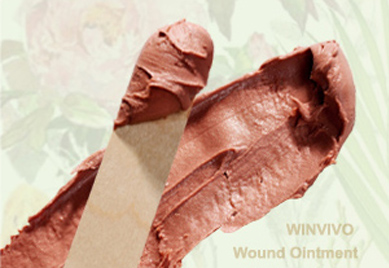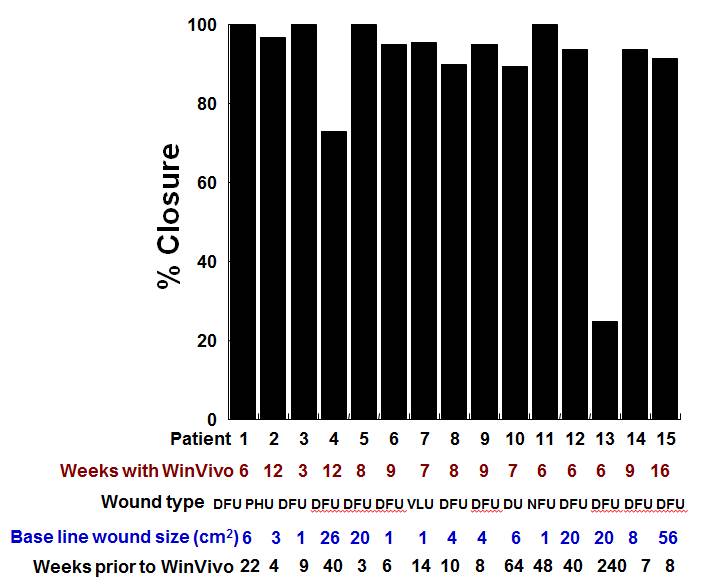Post Matrixectomy Wounds
 Ingrown toenails are one of the most common foot maladies. It is estimated that 20 percent of those seeking foot care are seeking it for this problem. Ingrowing toenails usually afflict younger patients. Studies from the Memorial Foundation of the Prescription Footwear Association show that the highest incidence of ingrown toenails occurs between the ages of 4 to 14 with a 1:1 male to female ratio. The incidence becomes lower with increasing age, however, with females experiencing ingrowing nails twice as often as males in individuals older than age 60.
Ingrown toenails are one of the most common foot maladies. It is estimated that 20 percent of those seeking foot care are seeking it for this problem. Ingrowing toenails usually afflict younger patients. Studies from the Memorial Foundation of the Prescription Footwear Association show that the highest incidence of ingrown toenails occurs between the ages of 4 to 14 with a 1:1 male to female ratio. The incidence becomes lower with increasing age, however, with females experiencing ingrowing nails twice as often as males in individuals older than age 60.
The ingrowing toenail, often seen as a trivial condition, can be a substantial source of pain and potential morbidity in high-risk patients. Diabetic patients with an ingrown nail are more likely to develop an infection than non-diabetic patients are. Even for otherwise healthy individuals, having chronic infected ingrown toenails can lead to the development of bone marrow infection (osteomyelitis). These serious complications therefore reinforce the need for appropriate management of ingrown toenails.
Ingrown nails are nails whose corners or sides dig painfully into the soft tissue of nail grooves, often leading to irritation, redness, and swelling. Usually, toenails grow straight out. Sometimes, however, one or both corners or sides curve and grow into the flesh. The big toe is usually the victim of this condition, but other toes can also become affected.

Development of ingrown nails is divided into the following 3 stages:
-
Nail-fold swelling (edema), redness (erythema), and pain with pressure.
-
Increased swelling, crusting and expressible pus at the nail fold (infection with drainage) and nail plate junction;
-
Chronic infection with prominent granulation tissue extending over the nail plate.
Causes of ingrown toenails include:
- Improper trimming - The most common cause of ingrown toenails is cutting your nails too short. This encourages the skin next to the nail to fold over the nail.
- Trauma - Sometimes an ingrown toenail is the result of trauma, such as stubbing your toe, having an object fall on your toe, or engaging in activities that involve repeated pressure on the toes, such as kicking or running.
- Heredity - In many people, the tendency for ingrown toenails is inherited.
- Improperly sized footwear - Ingrown toenails can result from wearing socks and shoes that are tight or short.
- Nail Conditions - Ingrown toenails can be caused by nail problems, such as fungal infection or losing a nail due to trauma.
Treatment of ingrown toenails:
If you suspect an infection due to an ingrown toenail, immerse the foot in a warm salt water soak, or a basin of soapy water, then apply an antiseptic and bandage the area.
If you have an infected nail, any “self-help” attempt to remove any part of an infected nail should be avoided. Nail problems should be evaluated and treated by your podiatrist, who can diagnose and treat the ailment properly.
People with diabetes, peripheral vascular disease, or other circulatory disorders, when having nail problems, must avoid any form of self-treatment and seek podiatric medical care as soon as possible.
Generally for infected ingrown nail a podiatrist will cut out the ingrown portion of the nail and may prescribe a topical or oral medication to treat the infection. If ingrown nail becomes a chronic problem, your podiatrist can perform a procedure called matrixectomy to permanently prevent ingrown nails. The corner of the nail that ingrows, is removed along with the root (matrix) of that piece of nail being destroyed (to prevent recurrence) by use of chemicals, laser, or by other methods.
Chemical matrixectomy with phenol and alcohol application (a P&A procedure) is one of the most common surgical procedures podiatrists perform. After the surgery, you will have some wound drainage, redness, swelling and tenderness.
Post matrixectomy wounds are sometimes difficult to heal due to many complex issues, including:
- Prolonged inflammation and pain due to chemical burn secondary to phenol use
- Excessive wound drainage (exudation)
- Redness & swelling (erythema & edema)
- Narrow, channel-type wound formed, rendering it susceptible to infection
- Poor blood circulation (ischemia)
- Poor patient compliance with rigorous post operation wound care involving frequent soaking
- Sensitivity to commonly used antibiotic ointments
Facing these complex issues and to improve the speed and quality of healing post matrixectomy wounds, under the guidance of a podiatrist one may consider using a multi-functional botanical therapy with these features:
- Including botanicals with broad-spectrum anti-microbial properties to protect wound bed from infection and to inhibit formation and growth of bacterial biofilms without harming nascent, delicate regenerating tissue;
- Employing naturally anti-inflammatory and analgesic botanicals to suppress prolonged inflammation and pain;
- Combination with botanicals that promote microcirculation of the low extremities to allow fast drainage and tissue regeneration;
- Ability to absorb wound fluid (exudate) to reduce maceration, and yet maintain a physiologically moist wound healing environment;
- Allowing painless, less frequent and easy dressing change;
- Healing wounds fast and effectively with maximum restoration of skin function and minimal scarring.
By using such a multi-functional botanical therapy, post matrixectomy wound care can be much easier and more convenient by avoiding frequent soaking, resulting in better patient compliance. In addition, those who are allergic to common antibiotic ointments such as Polysporin can use this natural alternative to achieve optimal healing.
Related Product
WINVIVO Wound Ointment
 This is a uniquely-effective, multi-functional botanical ointment clincally proven to accelerate healing of challenging wounds and skin ulcers. Its unique paste formulation includes naturally antimicrobial, anti-inflammatory and analgesic botanicals to inhibit infection, suppress itching and pain, promote microcirculation and tissue generation.
This is a uniquely-effective, multi-functional botanical ointment clincally proven to accelerate healing of challenging wounds and skin ulcers. Its unique paste formulation includes naturally antimicrobial, anti-inflammatory and analgesic botanicals to inhibit infection, suppress itching and pain, promote microcirculation and tissue generation.
Botanicals in WINVIVO Wound Ointment
Borneol resin (Dryobalanops aromatica)
Borneol resin has been shown to be antibiotic having an inhibitory effect against Staphylococcus aureus, Diplococcus pneumonia, E. coli, Pseudomonas aeruginosa, and other dermatophytes. It has been used to treat dizziness, otitis, and various forms of abscesses and swellings.
 Camellia Oil or Tea Seed Oil (Camellia oleifera)
Camellia Oil or Tea Seed Oil (Camellia oleifera)
Composed mainly of Oleic acid (almost 82%, the highest among all natural oils), camellia oil is the most penetrative of all natural oils, capable of permeating deeply into the lower layers of the skin to greatly enhance the beneficial effects of our natural collagen and elastin.
Coptis root (Coptis chinensis Franch.)
 The dried rhizome of Coptis chinensis Franch is used in the preparation of the Healing Balm. Traditional Uses of Coptis Root The first record for medical use of coptis has been appeared in the Chinese medical literature of The Divine Farmer’s Materia Medica (25 A.D. to 220 A.D).
The dried rhizome of Coptis chinensis Franch is used in the preparation of the Healing Balm. Traditional Uses of Coptis Root The first record for medical use of coptis has been appeared in the Chinese medical literature of The Divine Farmer’s Materia Medica (25 A.D. to 220 A.D).
Corydalis tuber (Corydalis turtschaninovii)
 Corydalis tubers have been shown to be analgesic, sedative and tranquilizing but has not been shown to cause dependence, and to be anti-inflammatory in inhibiting histamine release and formation of edema in animals in both acute and chronic phases of inflammation.
Corydalis tubers have been shown to be analgesic, sedative and tranquilizing but has not been shown to cause dependence, and to be anti-inflammatory in inhibiting histamine release and formation of edema in animals in both acute and chronic phases of inflammation.
Dragon's Blood resin (Daemonorops draco)
 Traditionally, Dragon's Blood resin has been used externally to stop bleeding, promote generation of flesh, and contain ulceration in the treatment of traumatic injuries, non-healing ulcers and hemorrhoids with swelling and pain.
Traditionally, Dragon's Blood resin has been used externally to stop bleeding, promote generation of flesh, and contain ulceration in the treatment of traumatic injuries, non-healing ulcers and hemorrhoids with swelling and pain.
Fritillaria (Fritillaria cirrhosa)
 For thousands of years fritillaria has been used in Asia to clear heat and to moisten the lung dryness, for heat-type bronchitis with dry cough and for the heart (to calm heart fire). Fritillaria is also used for treating lumps beneath the skin, such as scrofulous swellings and breast lumps.
For thousands of years fritillaria has been used in Asia to clear heat and to moisten the lung dryness, for heat-type bronchitis with dry cough and for the heart (to calm heart fire). Fritillaria is also used for treating lumps beneath the skin, such as scrofulous swellings and breast lumps.
Lithospermum root (Lithospermum erythrorhizon)
 In modern reserach, lithospermum root has marked anti-inflammatory effects and promotes healing. It has been used clinically to treat psoriasis, burns, cervical erosion, and hepatitis.
In modern reserach, lithospermum root has marked anti-inflammatory effects and promotes healing. It has been used clinically to treat psoriasis, burns, cervical erosion, and hepatitis.
Rhubarb root (Rheum palmatum)
 In traditional Chinese Medicine, rhubarb is used extensively as a purgative to treat a wide variety of accumulations, including constipation caused by excess heat, epigastric distention, fullness.
In traditional Chinese Medicine, rhubarb is used extensively as a purgative to treat a wide variety of accumulations, including constipation caused by excess heat, epigastric distention, fullness.
Tree peony bark (Paeonia suffruticosa Andr.)
 This botanical is used for clearing heat and cools blood, invigorating blood circulation and dispersing blood stasis in traditional Chinese Medicine.
This botanical is used for clearing heat and cools blood, invigorating blood circulation and dispersing blood stasis in traditional Chinese Medicine.
Note:
Please be advised that the information presented above is not to be used as a substitute for medical advice, diagnosis or treatment of any disease. Statements made about products have not been evaluated by the Food and Drug Administration. Viewers should not rely solely on the information provided on this web site for their own health problems, and are advised to consult with their physicians or other healthcare providers.
User Experience
- Girlfriend Set Me Straight
~ Pamela W.
- I am very into natural remedies
~ Alex H.
- Headache Gone Overnight
~ Josh L.
- Blocked sickness on the way
~ Jeff C.
Related FAQs
WINVIVO Wound Ointment:
Multi-Functional Botanical Therapy
- Difficult-to-Heal Wounds
Clinical Case Reports
- Diabetic Foot Ulcers
- Venous Leg Ulcers
- Skin Ulcers of Mixed Etiology
- Pressure Ulcers/Bedsores
- Surgical Wounds
- Traumatic Wounds


Privacy Policy | Disclaimer | Knowledge Garden Disclaimer | Return Policy | Contact Us | Affiliate Program
© 2009-2013 WinVivo Corporation All Rights Reserved






